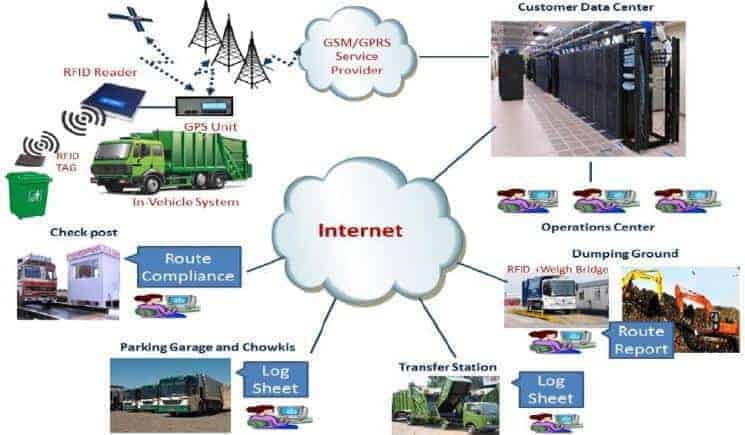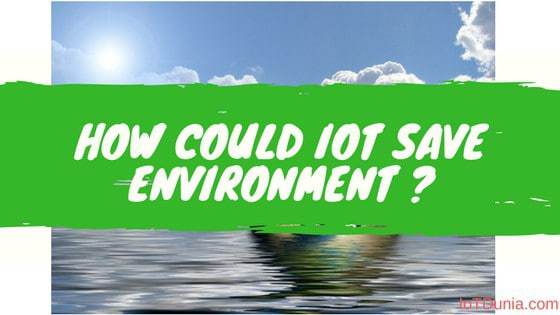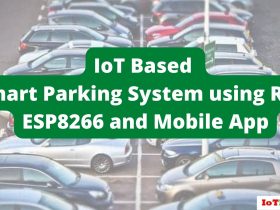IoT for Environment
IoT makes our life more easier and better. Pocket Pocket-sized environmental sensors are used for monitoring air quality, radiation, water quality and many more environment indicators. Sensors are connected to the smart phones through bluetooth , WI-FI etc. Sensor sends anomalous amount of data to the network. This will allow us to have a better understanding of our surroundings and prepare us to find suitable solutions for environmental problems.
Water management
Over the next 20 years the US government will spend almost $ 4 billion on rebuilding and upgrading the existing water infrastructure. Water bills will skyrocket again – and that seems pretty logical. After all, only 1% of the planet’s fresh water is available to end users, and some regions continuously suffer from drought.
IoT vendors do acknowledge the problem – and come up with extraordinary solutions. About 15% of Californian households now employ smart water meters – IoT gadgets that track water consumption and send the generated data to an app for further analysis. The US government has even developed the Green Button standard for smart meter data access, enabling customers to download the data generated by the gadgets from utility companies’ websites.
Customers can use the data to calculate potential savings via a mobile app or keep accurate records of water consumption for another provider. its clients manage to reduce water bills by £ 168 per year – and save 5.3 million liters of fresh water every day.
Although the smart meter rollout was set to a bumpy start, the eco-friendly water management technologies offer clear benefits to governments and end consumers.

Image credit : WebNMS/SmartMetering
Energy Management
The Internet of Things enables governments, businesses and consumers to monitor grids’ performance in real time, detect where they lose energy & determine where savings are possible.
Current, a new $ 1 billion business announced by General Electric in 2015, unveils the Internet of Things potential to improve energy management. The tech stack for the new project includes the General Electric Predix platform for the industrial internet, solar and energy storage solutions and LED lighting. The general idea behind the project is “LED lighting as a service”. Instead of simply selling energy-efficient lights, General Electric allows its customers to analyze energy consumption, generate energy through solar panels & store it using onsite batteries.
Quite a few companies – including Hilton Worldwide, Hospital Corporation of America and Intel – already use Current and save up to 20% on energy.
Waste Management
By 2025, the world’s population will produce 2.2 billion tons of waste every year (almost 100% up from 2014). Thus, the global spending on waste management will surpass $ 375 billion – but it’s not about money after all.
The Internet of Things waste management technologies change the way we collect and dispose garbage.
wireless sensors to help waste companies measure fill-level in waste containers and optimize garbage collection routes. The Enevo sensors reportedly reduce waste collection costs by 50%. The company currently operates in 35 countries.
The smart containers automatically compress waste, shrinking collection frequency by 70-80% on average.
Read More :Smart need for Garbage management | IoT based Waste Management
 image credit : igovernment
image credit : igovernment
Reduce CO2 Emission
IoT is beneficial for environment because of reducing the CO2 emission. Because of greenhouse large amount of gas emitted through human activities. IoT enabled the smart grids in the energy sector could save over 2.0 Gt of CO2 though implementation of smart meters and demand-response system. After that by improving energy efficiency with optimized routes of transportation, IoT could reduce about 1.9Gt of CO2 in 5 years. With more IoT applications become available, we are expecting to see broader positive impacts on the environment.
Challenges to the environment
On the other hand, IoT has also brought challenges to the environment. Now-a -days we are facing is the e-waste(waste of electrical and electronic equipment) problem. With hundreds and thousands of IoT devices pouring into the market in the next few years, the old-not-IoT-ready devices may end up in landfills. With the speed of IoT development, the number is expected to accelerate. The problem may not be obvious now, but we need to take that into consideration for a sustainable world development.
The second challenge is energy consumption. IoT networks require huge data centers to process and support their needs. As a result, the energy consumption by the data centers is massive. The resources needed to produce that energy will add a massive burden to the environment. Although big data centers are trying to use as little energy as possible, it’s still going to affect the energy sector as a whole. The energy and resources used to manufacture hundreds and thousands of new devices is another source of energy consumption caused by IoT.
For environment, IoT is a double edge bringing both benefits and challenges. People should be aware of the both sides so they can weigh the pros and cons thoroughly to benefit the most and sacrifice the least for environment because of reducing the CO2 emission.Because of greenhouse large amount of gas emitted through human activities. IoT enabled the smart grids in the energy sector could save over 2.0 Gt of CO2 though implementation of smart meters and demand-response system. After that by improving energy efficiency with optimized routes of transportation, IoT could reduce about 1.9Gt of CO2 in 5 years. With more IoT applications become available, we are expecting to see broader positive impacts on the environment.
See also: Protect Endangered Rhinoceros; Wild life saving with IoT
If you like this article subscribe our YouTube Channel for IoT video Tutorials.










Leave a Review